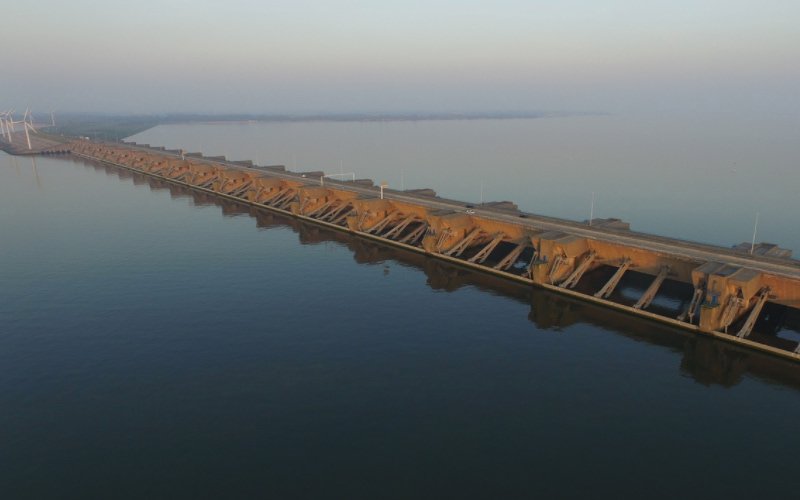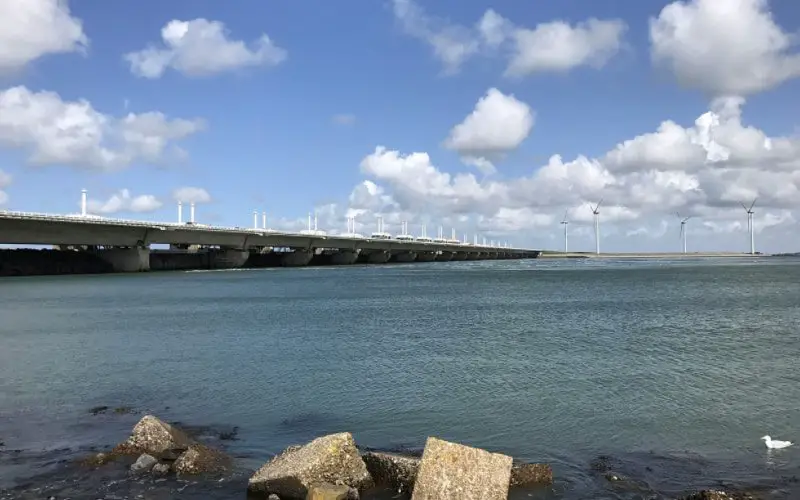

The Netherlands, a small, densely populated, and coastal country in Western Europe where most of the land is below sea level. But just because the Netherlands is a low-lying country doesn't mean it is underwater. In this blog, I will explain how the Dutch prevent The Netherlands from flooding over.
The Netherlands is not underwater, though almost one-third of the Netherlands is below sea level. Thanks to the advanced water management system which is a complex system of pumps, dunes, dykes, and the mega structures along the coastal area of the country, The Netherlands doesn't get flooded.
Is the Netherlands underwater? I am going to answer this question and discuss several topics related to this question in this article.
The Netherlands is a small coastal country with an area of 41,545 square kilometers (16,041 square miles) with a coastline that is about 451 kilometers (280 miles). The Netherlands is one of the most densely populated countries in the world with around 17 million people living in that small country.
The entire country can be divided into two areas: the highlands with some hills in the east and south and the flat lowlands in the west and north of the Netherlands. The western and northern lowlands which are about one-third of the Netherlands are below sea level where the lowest point is about 7 meters (23 feet) below sea level. Does this make the Netherlands the flattest country in the world?
The Rijn, Maas, and Schelde are the three major rivers that flow through the Netherlands. Among these three rivers, the Maas and the Rijn run through the country from east to west. Because of the vast coastline, the lowlands, and these rivers, about one-fourth area of the Netherlands is vulnerable to flooding. But the Netherlands has dealt with their flooding problem in the best way possible.
With this vast area that is below sea level, why isn't the Netherlands underwater? Since the establishment of this coastal nation thousands of years ago, floods have been one of the major problems for the Netherlands. But, through a complex system of pumps, dunes, and dykes along the coastline, the Netherlands keeps floodwater away from the mainland.
Not only that, the Netherlands has developed the most advanced anti-flood system that the world has ever seen. This anti-flood system is known as “The Delta Works”.
The Netherlands had tackled the flooding problem through a complex network of dikes, pumps, and dunes that had been built since the country was founded thousands of years ago. But the flooding caused by the storm in January 1953 made the people of the Netherlands realize that they needed to rethink their flood defense strategy.
The storm of 1953 caused one of the deadliest floods in the history of the Netherlands flooding about 200,000 acres of land, destroying 4500 homes, claiming the lives of 1,836 people, along with 200,000 animals, and forcing 72,000 people to relocate. This disaster came when the Netherlands was just recovering from the German occupation during the Second World War which left the flood defense system of the Netherlands completely destroyed.
This forced the Dutch government to think of something that could prevent this type of disaster from never happening again. And so "The Delta Works" project came to light. The main objective of this project was to block the main water inlet points in the coastal area of the Netherlands that fed the country’s rivers which would decrease the chances of flooding.
Their goal was to reduce the annual chances of flooding below 1 in 10,000, which is about 100 times safer as compared to the average annual chances of flooding of other coastal cities in the world. This was a lofty project which the Dutch people have successfully completed.
The dams built as part of the Delta Works are fitted with lock gates. This is to prevent the rivers from being able to put their freshwater into the sea, otherwise, this water would have flooded the mainland. The lock gates allow the rivers to flow their water into the sea, protecting the land from flooding.
The port of Rotterdam is one of the most important trading places in the Netherlands. Sealing the port would have had a catastrophic impact on the economy of the Netherlands. To solve this problem, a moving barrier was built which can be closed whenever a storm arises in the sea and there is a chance of flooding. This is one of the largest moving structures in the world.
These things make up the first line of defense against floods. In the beginning, the focus of the Delta Work was to defend against ocean storms, but in the following decades, the Dutch government took some additional measurements as part of the Delta Work to protect against floods further inland.
For that reason, polders and dikes that were close to the coast were moved further inland, leaving more room for water collection in low-lying floodplains, creating freshwater reservoirs and habitats for local wildlife. As a result of this strategic relocation, the Dutch were able to establish sustainable polders and reduce the risk of flooding.
Another part of the project is to artificially elevate the lowlands of the Netherlands. While cities like Rotterdam which is almost entirely below sea level are protected by dykes, new cities have been established in these artificially elevated lands for reducing flood risk.
The Delta Works project is one of the most costly and ambitious water management projects in the world. But no matter what the cost, this project has been saving lives and billions of dollars from the flood. This project is the one that is responsible for keeping a country like the Netherlands where most of the land is below sea level from being underwater.
The Delta Works in The Netherlands:

Global warming is one of the major problems in today's world. The continuous increase of greenhouse gases like carbon dioxide, nitrous oxides, and methane due to industrialization having an insulating effect on our atmosphere. These gases are trapping heat, similar to a greenhouse where the heat from the sun is trapped inside a house made of glass.
Another reason is deforestation. People are cutting down trees all over the world. As a result, the temperature is continuously rising all around the globe. Summers are too hot, winter temperature is too low, natural disasters like storms, cyclones, tsunamis are much more common than before. Global warming is responsible for all these.
Click here if you would like to know more about why The Netherlands is so windy. This is also influenced by climate change.
The North and South Pole holds a huge amount of water in the form of ice. With the increase in global temperature, the polar ice caps are melting causing sea level to rise. Countries like the Netherlands, Bangladesh, Italy, Denmark which are below sea level will suffer the most. If the sea level keeps rising, most of the land of these countries will go underwater.
With that in mind, the Dutch government has taken various measures to deal with the threat of sea-level rise. One is to upgrade the structures built as part of their Delta Work project. These upgrades include strengthening the foundations of these decades-old structures, widening coastal dunes, and increasing the height and width of the sea and river dikes.
That is not all, as the government has plans to build amphibious structures in the port that can float with the rise in the water level. These constructions are equipped with water purification systems and solar energy. Several amphibious structures have already been built.
These are some of the technologies and policies that the Dutch government has put in motion to meet the challenge of climate change threatening a low-lying country like the Netherlands. The Netherlands is an exceptional example of how to deal with the climate changes that cause natural disasters and how the country tries to master these natural forces smartly and innovatively.
The Netherlands has really solved their water problem, which has been a major concern for the Dutch for thousands of years. They have developed the most advanced water management system and are an example to the world. By reading this blog "Is the Netherlands underwater?" I have hopefully been able to answer all your questions on this subject.